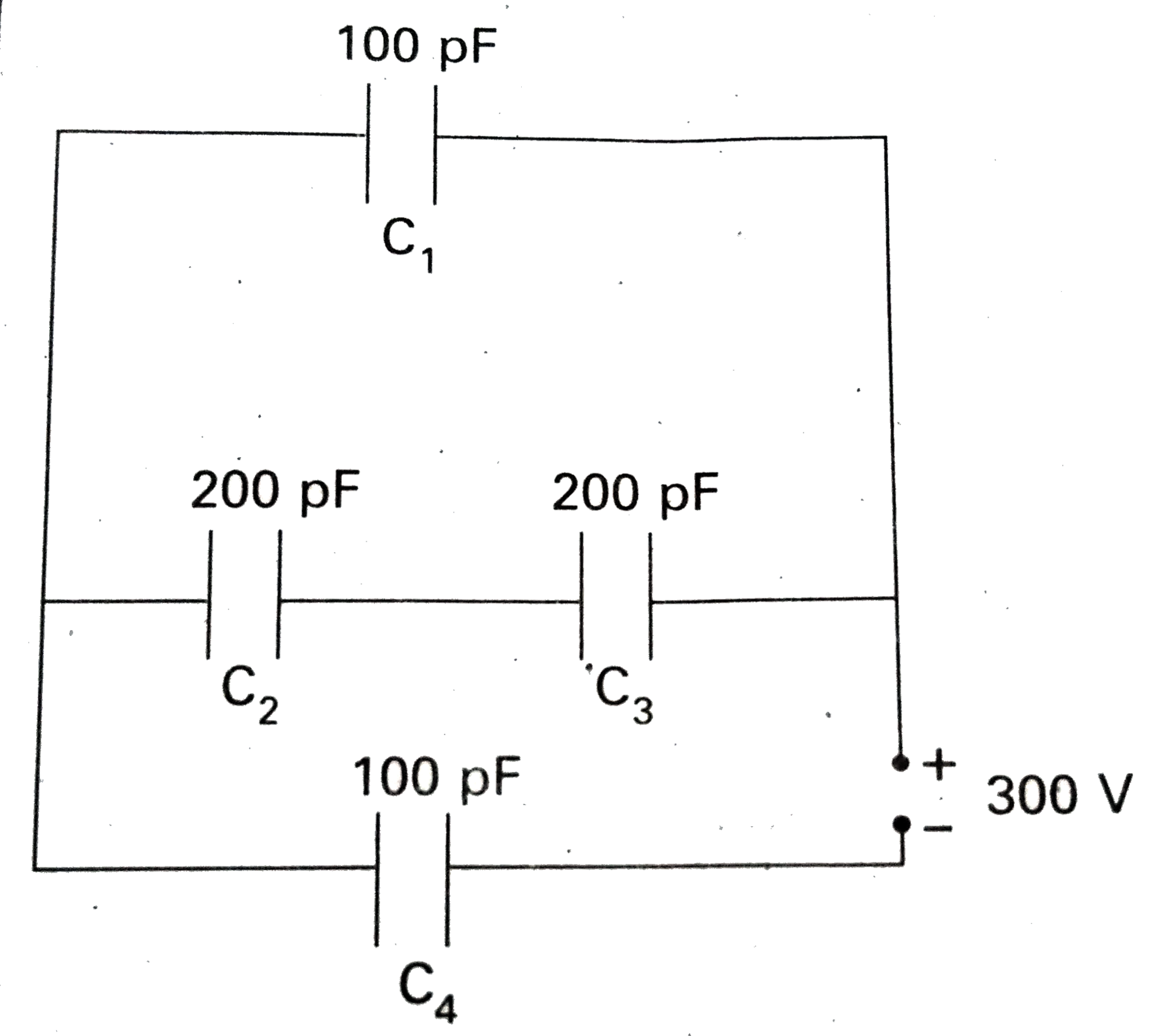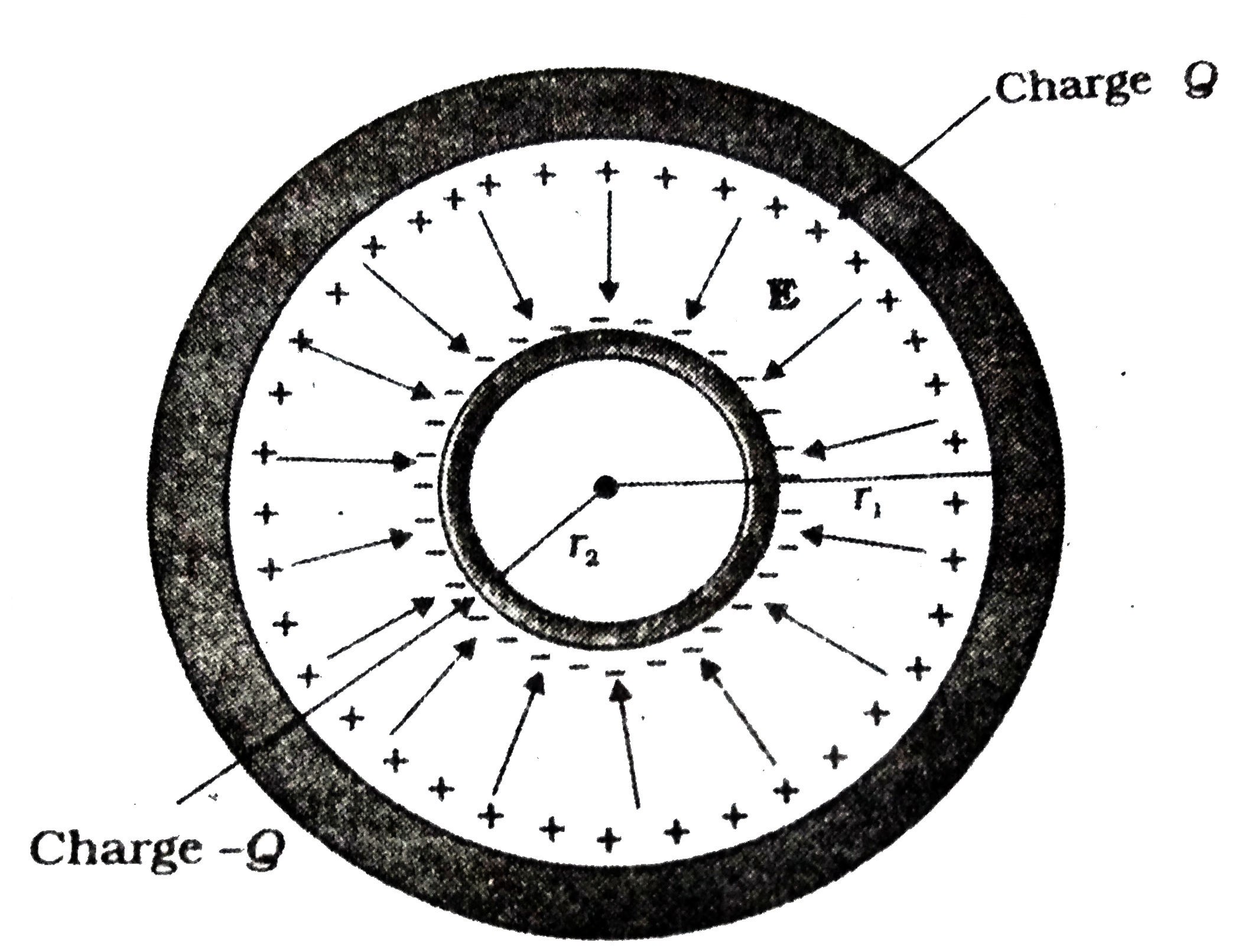Complete Solutions to Additional Excercise of chapter ELECTROSTATIC POTENTIAL AND CAPACITANCE of Class 12 book with complete answers and questions
| Class 12 | PHYSICS |
| Chapter | ELECTROSTATIC POTENTIAL AND CAPACITANCE |
| VIKRAM | Additional Excercise |
| Number Of Questions | 36 |
| Academic Year | 2023-24 |
A charge of 8mC is located at the origin. Calculate the workdone in taking a small charge of `-2xx10^-9C` from a point P(0,03cm) to a point `Q(0,4 cm,0)` Via a point `R(0,6cm,9cm)`.
View SolutionA cube of side b has a charge q at each of its vertices , Determine the potential and electric field due to this charge array at the centre of the cube.
View SolutionTwo tiny spheres carrying charges `1.5muC` and `2.5muC` are located 30 cm apart. Find the potential and electric field :
(a) at the mid-point of the line joining the two charges and
(b) at a point 10 cm from this midpoint in a plane normal to the line and passing through the mid-point.
View SolutionA spherical conducting sheel of inner redius `s_1` and outer radius `r_2` has a charge Q. (a) A charge q is placed at the centre of the shell. What is the surface charge density on the inner and outer surfaces of the shell ?
View SolutionIs the electric field inside a cavity (with no charge) , zero, even if the shell is not spherical, but has any irregular shape ? Explain.
View SolutionShow that the normal component of electrostatic field has a discontinuity from one side of a charged surface to another given by `(E_2-E_1). overset(^^)(n)=(sigma)/(epsi_0)`
Where `overset(^^)(n)` is a nuit vector normal to the surface at a point and `sigma` is the surface charge density at that point . (The direction of `overset(^^)(n)` is from side 1 to side 2.) Hence show that just out side a conductor , the electric field is `sigma overset(^^)(n)//epsi_0`.
(b) Show that the tangential component of electrostatic field is continuous from one side of a charge surface of another. use the fact that work done by electrostatic field on a closed loop is zero. )
View SolutionA long charged cylinder of linear charged density `lambda` is surrounded by a hollow co-axial conducting cylinder. What is the electric field in the space between the two cylinders ?
View SolutionIn a hydrogen atom , the electron and proton are bound at a distance of about `0.53Å`.
(a) Estimate the potential energy of the system in e V, taking the zero of the potential energy at infiniate separation of the electron from proton.
(b) What is the minimum work required to free the electron, given that is kinetic energy in the orbit is half the magnitude of potenital energy obtained in (a) ?
(c) What are the answers to (a) and (b) above if the zero of potential energy is taken at `1.06Å` separation ?
View SolutionIf one of the two electrons of a `H_2` molecule id removed , we get a hydrogen molecules ion `H_(2)^(+)`. In the ground state of an `H_(2)^(+)`. The two protons are separated by roughly `1.5Å`. And the electron is at 1Å roughly from the nucleus. Find potential energy of the system. Specigy your choice of the zero of potential energy.
View SolutionTwo charged conducting spheres of radii a and b are connected to each other by a wire. What is the ratio of electric fields at the surfaces of the two spheres ? Use the reuslt obtained to explain why charge density on the sharp and pointed ends of a conductor is higher than on its flatter portions.
View SolutionTwo charges -q and +q are located at points (0,0-a) and (0,0-a), respectively.
(a) What is the electrostatic potential at the points (0,0,z) and (x,y,0) ?
(b) Obtain the dependence of potential on the distance r of a point from the origin when `r//a gt gt1.`
(c) How much work is done in moving a small test charge from the point (5,0,0) to (-7,0,0) along the x-axis? Does the answer change if the path of the test charge between the same points is not along the x-axis ?
View SolutionFigure shows a charge array known as an electric qudarupole. For a point on the axis of the quadrupole , obtain the dependence of potential on r for `r//a gt gt 1`. And contrast your results with that due to an electric dipole, and an electric monopole (i.e., a single charge).

View SolutionAn electrical technician requires a capacitance of `2muF` in a circuit across a potential difference of `1kV`. A large number of `1muF`capacitors are available to him each of which can withstand a potential difference of not more than 400V. Suggest a possible arrangement that requires the minimum number of capacitors.
View SolutionWhat is the area of the plates of a 2 F parallel plate capacitor , given that the separation between the plates is 0.5cm ? [You will realise from your answer why ordinary capacitors are in the range of `muF` or less. However , electrolytic capacitors do have a much larger capacitance `(0.1F)` because of very minute separation between the conductors.]
View SolutionObtain the equivalent capacitance of the network in Fig. For a 300 V supply. Determin the change and voltage across each capacitor.

View SolutionThe plates of parallel plate capacitor have an area of `90 cm^2` each and area separated by 2.5mm. The capacitor is charged by connecting it to a 400V supply.
(a) How much electrostatic energy is stored by the capacitor ?
(b) View this energy as stored in the electrostatic field between the plates , and obtain the energy per unit volume n, Hence arrive at a relation between u and the magnitude of electric field E between the plates.
View SolutionA `4muF` capacitor is charged by a 200 V supply. It is then disconnected from the supply . And is connected to another uncharged `2muF` capacitor. How much electrostatic energy of the first capacitor is lost in the form of heat and electromagnetic radiation ?
View SolutionShow that the force on each plate of a parallel plate capacitor has a magnitude equal to `(1//2)` QE, where Q is the charge on the capacitor , and E is the magnitude of electric field between the plates . Explain the origin of the factor `1//2`.
View SolutionA spherical capacitor consists of two concentric spherical conductors, held in position by suitable insulating supports (Fig). Show that the capacitance of a spherical capacitor is given by `C=(4piepsi_0r_1r_2)/(r_1-r_2)`

where `r_1 and r_2` are the radii of outer and inner spheres , respectively.
View SolutionA spherical capacitor has an inner sphere of radius 12 cm and an outer sphere of radius 13 cm. The outer sphere is earthed and the inner sphere is given a charge of `2.5muC`. The space between the concentric spheres is fillled with a liquid of dielectric constant 32.
(a) Determine the capacitance of the capacitor.
(b) What is the potential of the inner sphere ?
(c) Compare the capacitance of this capacitor with that of an isolated sphere of radius 12 cm. Explain why the latter is much smaller.
View SolutionTwo large conducting sphers carrying charges `Q_1 and Q_2` are brought close to each other. Is the magnitude of electrostatic force between them exactly given by `Q_1Q_2//4piepsi_0r^2`. Where r is the distance between their centres ?
View SolutionIf Coulomb's law involved `1//r^3` dependence (instead of `1//r^2`), would Gauss's law be still true ?
View SolutionA small test charge is released at rest at a point in an electrostatic field configuaration. Will it travel along the field line passing through that point ?
View SolutionWhat is the work done by the field of a nucleus in a complete circular orbit of the electron ? What if the orbit is elliptical ?
View SolutionWe know that electric field is discontinuous across the surface of a charged conductor . Is electric potential also discontinuous there ?
View SolutionWhat meaning would you give to the capacitance of a single conductor ?
View SolutionGuess a possible reason why water has a much greater dielectric constant (=80) than say, mica(=6).
View SolutionA cylinderical capacitor has two co-axial cylinders of length 15 cm and radii 1.5cm and 1.4 cm . The outer cylinder is earthed and the inner cylinder is given a charge of `3.5muC`. Determine the capacitance of the system and the potential of the inner cylinder. Neglect end effets (i.e., bending of filed lines at the ends).
View SolutionA parallel plate capacitor is to be desigined with a voltage rating 1kV, using a material of dielectric constant 3 and dielectric strength about `10^7 Vm^(-1)` (Dielectric strength is the maximum electric field a material can tolerate without breakdown, i.e., without starting to conduct electricity through partical ionisation. ) For safety, we should like the field never to exceed, say `10%` of the dielectric strength. What minimum area of the plates is required to have a capacitance of 50 pF?
View SolutionDescribe schematically the equipotential surfaces corresponding to
(a) a constant electric field in the z-direaction .
(b) a field that uniformaly increases in magnitude but reamins in a constant (say,z) direction.
(c) a single positive charge at the origin, and
(d) a uniform grid consisting of long equally spaced parallel charged wires in a plane.
View SolutionIn a Van de Graff type generator a spherical metal shell is to be a `15xx10^6V ` electrode. The dielectric strength of the gas surrounding the electrode is `5xx10^7Vm^-1`. What is the minimum radius of the spherical shell required ? (You will learn from this excerise why one cannot build and electrostatic generator using a very small shell which requires a small charge to acquire a high potential. )
View SolutionA small sphere of radius `r_1` and charge `q_1` is enclosed by a spherical shell of radium `r_2` and charge `q_2`. Show that if `q_1` is positive , charge will neecessarily flow from the sphere to the shell ( when the two are connected by a wire ) no matter what the charge `q_2` on the shell is .
View SolutionThe top of the atmosphere is at about 400kV with respect to the surface of the earth , corresponding to an electric field that decreases with altitude. Near the surface of the earth, the field is about `100Vm^(-1)`. Why then do we not our house into the open? (Assume the house to be a steel cage so there is no field inside)
View SolutionA man fixes outside his house on evening on its top a large aluminium sheet of area `lm^2`. Will he get an electric shock if he touches the metal sheet next morning ?
View SolutionThe discharging current in the atmosphere due to the small conductivity of air is known to be 1800 A on an average over the globe . Why then does the atmosphere not discharge it self completely in due course and becomed electrically neutral ? In other words, what keeps the atmosphere charged?
View SolutionWhat are the forms of energy into which the electrical energy of the atmosphere is dissipated during a lighting ?
View Solution
Additional Excercise questions and complete solutions for chapter ELECTROSTATIC POTENTIAL AND CAPACITANCE of VIKRAM PUBLICATION ( ANDHRA PUBLICATION) of Class 12